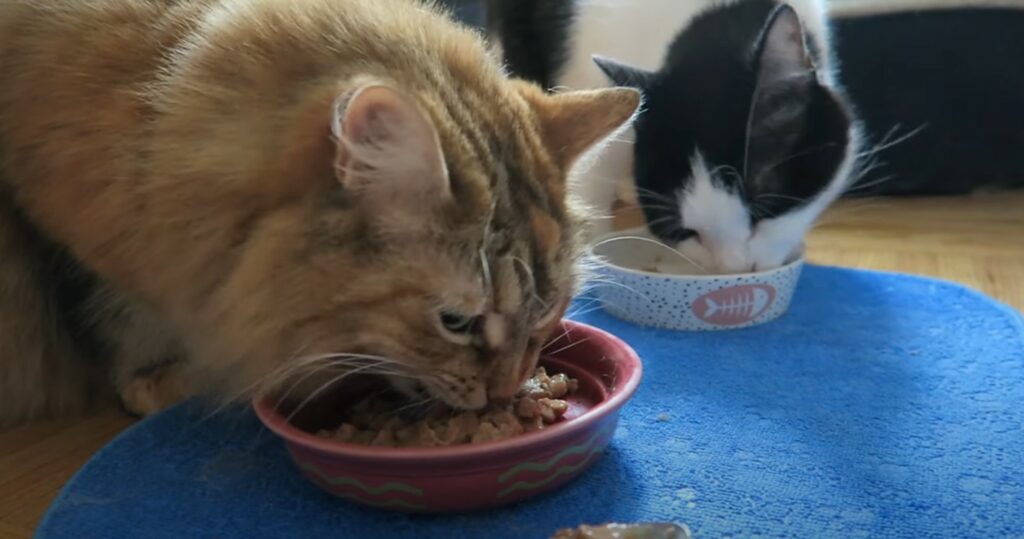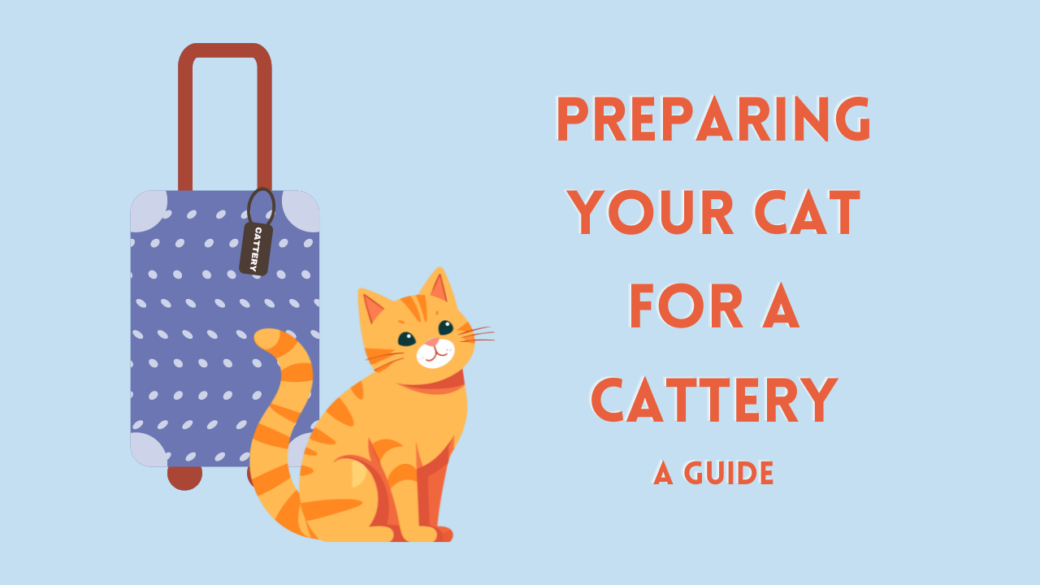With a pet cat in your life, it’s easy to think holidays are a thing of the past. After all, there’s another life depending on you, right? Thankfully, plenty of cat owners still enjoy regular holidays by using pet sitters or booking their cats into boarding catteries. It is the latter this article will focus on.
Catteries can be a daunting thought if you’ve never used one before. It means your cat is in an unfamiliar setting, being cared for by strangers while you could be hundreds of miles away in another country. However, many cat boarding facilities follow the rules set out by the British government to ensure the care they provide meets specific standards, which helps to put many owners’ minds at peace.
If you do decide to put your cat in a boarding establishment’s care, there are certain aspects you should prepare in advance. But first, you should know exactly what a cattery is.
Table of Contents
What is a Cattery?
Catteries provide temporary housing accommodation for cats while their owners are away or unable to care for them. Pet owners usually use a cattery – known as a cat hotel or kennel to some – when they go on holiday, away for business, or are moving house.
Unless housed with cats from the same household, each cat is kept in an individual unit consisting of a sleeping box and an exercise area. Reputable catteries in the UK must follow the regulations set out in animal welfare legislation, which include the monitoring of resident felines, the required sizing and spacing of each cat unit, the standard of cleanliness, and more.

If you are unsure whether your cat will enjoy a stay in a cat boarding facility or prefer to stay in its own home, then you might benefit from reading this article debating what’s better – a cat sitter or a cattery.
8 Steps for Putting Your Cat in a Cattery for the First Time
Knowing how to prepare your cat for a stay in a cat boarding facility can reduce the stress both you and the kitty experience. The eight steps in this article will help make the process as simple as possible.
1. Familiarise Your Cat with the Carrier
Unfortunately, most cats find their carriers to be unpleasant. This is unsurprising when they are usually only used to cart cats back and forth to vet appointments, so teaching your cat to enjoy being inside its carrier can be a difficult task.
The following tips can be used to make your cat more comfortable in the carrier:
- Place the carrier somewhere your cat likes to relax. This will allow the cat to explore the carrier in its own time instead of being forced into it when the time comes.
- Make sure the carrier has warm bedding and an absorbent towel inside. Cats can sometimes urinate when they are scared, so these layers will keep the cat clean, dry, and comfortable.
- Use treats as an incentive to climb into the carrier. A few treats that cats love, like chicken or salmon, placed at the opening of the carrier will lure the cat in.
- Calm your cat with your own scent. Playing with your cat near the carrier and allowing them to relax in your presence will make it more pliant when it needs to go into the carrier.
2. Check the Cat’s Vaccinations are Up-to-Date
Before a cat can stay in a pet boarding facility, it must have all of the necessary vaccinations. You can check what vaccines your cat has had and if it requires boosters with a visit to your local vet practice. The most common vaccinations cats require before being boarded target these three infectious agents:
- Feline panleucopenia virus (FPV)
- Feline herpesvirus (FHV)
- Feline calicivirus (FCV)
There are other diseases cats can be vaccinated against, but the vet will advise you which ones your cat will need. Proof of these vaccinations will be required upon arrival at the cattery; if you fail to provide this, the cattery will likely refuse your booking.
During the appointment, the vet will give your cat a health check to ensure it is healthy enough to stay in a cattery.
3. Ensure Your Cat’s Microchip Details are Correct
Cats can go missing when they are boarded, although this is a rare occurrence. To ensure your cat can be returned if the worst were to happen, you must check your contact details are up-to-date on all identification tags and microchip databases.
As of the 10th of June 2024, pet cats will need to be microchipped, according to new legislation.
4. Choose a Reputable Boarding Facility
Once you have found all the catteries in your local area, you will want to narrow the search to just the reputable ones. Unfortunately, not all catteries provide the same standard of care; some will be much better than others. As you can imagine, a professional cattery is more likely to provide the best care. Just like other services, the top-performing establishments will follow The Animal Welfare Act, as previously stated.
Reputable catteries will fill up quickly, which means you will need to find one and book a space for your cat well in advance. It is unlikely that there will be spaces available at the last minute during peak seasons, which is usually during school holidays.
A good cattery will be able to answer any questions you have, provide its licence and other documentation, and put you in contact with cat owners who have used the service before. For more tips on what to check before booking a cattery, click here.
5. Check the Cattery Caters to Your Cat’s Needs
You should check several aspects with the cattery to ensure your cat’s daily routine will be as similar to its home routine as possible. Of course, it will not be a mirror image, but keeping some things the same will help your cat adjust to its new environment. These aspects include catering to the cat’s litter, diet, and medication as required.
Cat Litter
Cats are creatures of habit, so a change in cat litter can put them off using the litter tray. To avoid this, a lot of catteries will offer a selection of cat litter for the owner to choose from.
Diet
If you feed your cat a particular diet, discuss this when booking in. There are so many different types of cat food, but cat boarding establishments tend to carry a range of products to suit the different dietary needs of their residents.
You can also provide your own cat food if you prefer. If you do, ensure the cat food is clearly marked with your cat’s name and in an airtight container; this will help prevent the cattery from losing your cat’s food and keep it as fresh as possible. It is also vital to provide the correct amount to last the entire duration of the cat’s stay, so include feeding instructions. Do the same if you bring extra treats for the staff to feed your cat, too.
Some cat hotels will ask the owner to bring the cat’s food bowl, although this is rare. You might want to bring it just in case.

Medication
Similar to cat litter and diet, you should also discuss medication if your cat requires it regularly. Medication will usually be administered by staff members who are trained to do so, but the owner must provide clear instructions, including dosage, the timings to administer it, and any other information the cattery should know beforehand.
6. Consider a Trial Stay in the Cattery
A trial stay is a great idea if you are going to be away for a longer period or if this is your cat’s first experience with a boarding facility. Trial stays are usually only for a couple of nights to allow the cat to adjust and settle into the change of environment and routine. This is usually when the cattery is at its quietest and can be planned ahead of time with the help of staff members.
During the cat’s stay, ask staff members to keep a note of how your cat copes and its behaviour. As long as you choose a good cattery, you can put your worries to rest as you will see the standard of care your cat receives.
If cattery staff do not allow trial visits, this can sometimes be a warning sign not to book your cat in. However, testing your cat’s reaction to staying in the cattery might not be possible due to availability or another plausible reason. If a trial stay is not possible for a good reason, make sure you visit the cattery before your cat’s stay to check the facilities are up to scratch.
7. Bring Items from Home
To reduce the stress your cat might feel in a cattery, you can ask staff if you can bring items from the home environment. This is one of the downsides of a cattery as a professional pet sitter would allow the cat to stay in its own environment, but a cattery will be filled with new scents. Because of this, many catteries recommend bringing items with familiar scents to make the cat’s stay more enjoyable.
The best items to bring include the cat’s bed, its favourite toys, something with the owner’s scent on it, and some treats. Even though the cattery might provide bedding and toys, items from home will help the feline feel more relaxed.
8. Ask for Regular Updates During Your Cat’s Stay
If you still find yourself worried about leaving your pet in the care of someone else, you can ask the cattery to send you regular updates on the cat’s experience. This will allow you to talk to staff about how your cat is coping in the accommodation or answer any questions they might have regarding your cat’s care.
Some facilities will even offer to send photos of your kitty enjoying its very own holiday away from home, which can ease the owner’s worries. If this is not stated on the facility’s website or mentioned during a discussion with staff, you can ask for this instead; the worst they can say is that they don’t offer that service, but many will be perfectly happy to accommodate your request.
Common Questions Owners Ask When Leaving a Cat in a Cattery
Worrying about your cat and the care it will receive while you’re away is normal. Many owners will feel guilty about leaving the cat in a cattery, especially if this is the cat’s first stay in one, but this feeling is often unnecessary. To ease your worry, some of the most commonly asked questions have been provided below, as well as their answers.
Are Catteries Stressful for Cats?
Cats can become stressed when staying in catteries. These are animals of routine and prefer to be in familiar environments, and many will be territorial of their space. The additional scents, sights, and sounds of a cattery can cause the cats to become anxious, but there are ways to minimise this stress, such as:
- Putting items from home in the cat’s accommodation unit to surround it with familiar scents.
- Getting the cat accustomed to catteries from a young age if you plan on using them regularly.

Is It Cruel to Put Cats in a Cattery?
Although some catteries offer a lower standard of care, many establishments provide cats with everything they could ever need or want, which cannot be described as “cruel.” It can go against a cat’s nature to be surrounded by other cats in an unfamiliar environment, which might make the experience unpleasant, but most catteries will cater to the animal’s needs as best as they can.
How Long is Too Long for the Cat?
The length of time a cat can comfortably stay in a boarding establishment can depend on numerous factors, including the cat’s age and personality. The former is the most common aspect cat owners think about when leaving their pets. Adult cats often adjust to cattery life easily, especially if they have stayed there before. Putting an adult cat in a cattery for the first time might be slightly more stressful, but it will get used to the accommodation relatively quickly.
However, kitten owners asking, “Will my kitten be okay in a cattery for two weeks?” might need to select a different option. Although there are good catteries that will cater to a kitten’s needs, and kittens can go into catteries if they are vaccinated, very young cats might struggle to cope with the change of staying in a boarding facility. If your cat is still on the young side, you can discuss the level of care a cattery will offer to ensure you make the right choice.
If you are going away for a week or longer, a cattery is a good choice, as the facility is prepped to continue caring for your cat during this time. A cat sitter, neighbour, or family member might have a change of plans during your trip, which could affect the care and human company your cat receives. At least a cattery will have staff on hand to provide the cat with attention, food, and so on.
To Sum Up
There is a lot to prepare before boarding your pet cat, and this is why it is essential to start with plenty of time to spare. It is all worth it if you can ensure your cat will be well taken care of while you are away from home. The information provided in this article can help cat owners make that a reality.
Even if you have never used a cat hotel before or your cat is a regular visitor, the eight steps explained here can help to simplify the process. Not all cats love being in a cat boarding facility, but this is often a better method than cat sitters when you are away for a longer time. Of course, if you would prefer to use a professional cat sitter or home boarder, these options can be worth researching.
The next time you go away on holiday or need to decorate, at least you will have the knowledge and correct steps to follow if you need to book a cat boarding facility.

